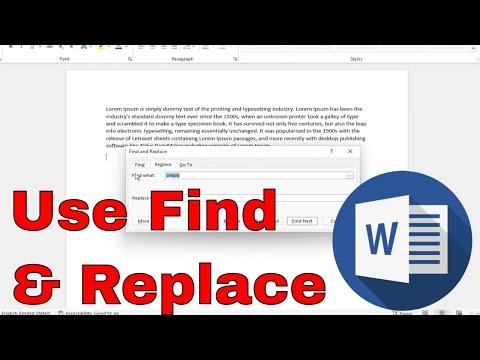I remember the day I first encountered the challenge of managing a large document in Microsoft Word. I had been working on a lengthy research paper that required meticulous editing. As the draft grew, so did the number of repetitive errors and inconsistencies. I found myself endlessly scrolling through pages, searching for specific terms to update and correct. The task was becoming increasingly tedious, and my patience was wearing thin. That’s when I stumbled upon the Find & Replace feature in Microsoft Word. It turned out to be a game-changer, transforming a time-consuming chore into a swift and efficient process.
My initial experience with the Find & Replace feature was born out of necessity. I had just finished compiling a document and realized that certain terminologies were inconsistent. For example, I had used “color” in some instances and “colour” in others. The inconsistency was minor, but it was important for the document’s professionalism and coherence that such discrepancies be addressed. I needed a solution that would allow me to make these corrections quickly without having to manually sift through the entire document.
I started by opening the Find & Replace dialog box, which is the heart of this feature. In Microsoft Word, you can access this tool by pressing Ctrl + H on your keyboard, or by navigating through the ribbon. From the Home tab, I clicked on “Replace” in the Editing group. This action brought up the Find & Replace dialog box, where I was greeted by two primary fields: one for “Find what” and another for “Replace with.”
The first step in using this tool effectively was to enter the term I wanted to find. For my case, I typed “color” into the “Find what” field. The next step was to enter the replacement term in the “Replace with” field, which in my case was “colour.” Once I had filled in these fields, I could proceed with the replacement.
Before executing the replacement, I decided to use the “Find Next” button. This allowed me to navigate through each occurrence of the term “color” in my document, ensuring that each instance was correctly identified and contextually appropriate for replacement. This step was crucial because, in some cases, the term “color” might have appeared in contexts where “colour” was not suitable.
After reviewing the instances, I was confident that the replacement was appropriate. I clicked on the “Replace” button to substitute each occurrence individually, or if I was sure, I could have used the “Replace All” button to make all replacements at once. I opted for “Replace All” for efficiency, but it’s wise to use this option with caution, especially in documents with varied contexts.
Another powerful feature I discovered was the ability to use wildcards in Find & Replace. This became particularly useful when dealing with complex patterns or when the terms varied slightly. By checking the “Use wildcards” box, I could perform more advanced searches. For example, if I needed to replace variations of a word or different formats of dates, wildcards provided a flexible way to search and replace multiple instances at once.
One specific instance where wildcards proved beneficial was when I needed to standardize the formatting of dates throughout my document. Dates were initially written in various formats like “MM/DD/YYYY” and “DD-MM-YYYY.” Using wildcards, I could search for patterns and replace them with a unified format, ensuring consistency across the entire document.
Additionally, Find & Replace allows for case-sensitive searches. By clicking on “More” in the dialog box, I could access additional options including “Match case” and “Find whole words only.” This feature was useful when I needed to differentiate between uppercase and lowercase instances of a term, such as when editing acronyms or proper nouns.
Another handy feature was the ability to use the “Format” button within the Find & Replace dialog box. This option allowed me to search for specific formatting styles, such as bold, italic, or font size, and replace them as needed. For instance, if certain sections of my document were formatted inconsistently, I could standardize the formatting by searching for the specific style and replacing it with the desired format.
As I continued to explore the Find & Replace feature, I became more adept at using it to streamline my editing process. I learned to appreciate its versatility, from simple text replacements to more complex formatting changes. The feature not only saved me time but also helped me maintain consistency and professionalism in my document.
In conclusion, the Find & Replace feature in Microsoft Word is an incredibly powerful tool that can significantly enhance the efficiency of editing and managing large documents. My initial encounter with this feature was driven by the need to correct inconsistencies in my research paper, but it soon became an indispensable part of my editing toolkit. By mastering its various options and features, I was able to handle repetitive tasks with ease, allowing me to focus more on the content and quality of my work. For anyone grappling with similar issues, I highly recommend taking the time to explore and utilize the Find & Replace functionality—it might just become your best ally in document management.
